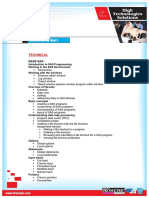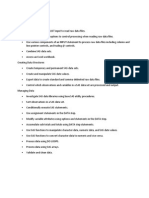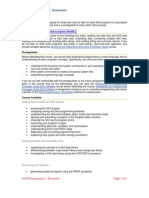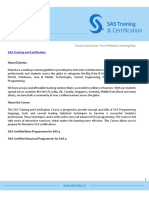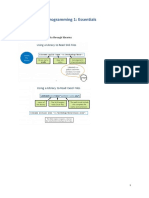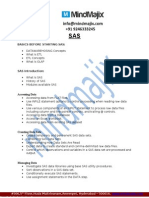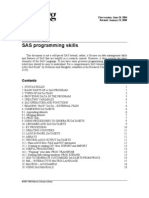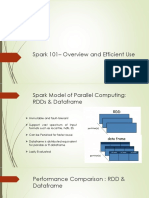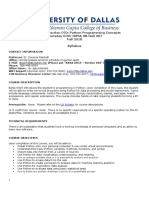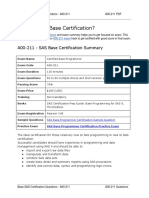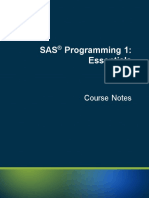0% found this document useful (0 votes)
128 views4 pagesSpecialist Base Programming
This document provides an overview of the objectives covered in the SAS 9.4 Base Programming – Performance Based Exam. It outlines 23 main objectives related to accessing and manipulating data, error handling, and generating reports. Some key skills covered include creating and modifying SAS data sets, combining and sorting data, using functions and loops to manage data, and generating lists, summaries, frequencies and custom reports. The exam evaluates a candidate's ability to perform common programming and data management tasks in SAS.
Uploaded by
divya kolluriCopyright
© © All Rights Reserved
We take content rights seriously. If you suspect this is your content, claim it here.
Available Formats
Download as PDF, TXT or read online on Scribd
0% found this document useful (0 votes)
128 views4 pagesSpecialist Base Programming
This document provides an overview of the objectives covered in the SAS 9.4 Base Programming – Performance Based Exam. It outlines 23 main objectives related to accessing and manipulating data, error handling, and generating reports. Some key skills covered include creating and modifying SAS data sets, combining and sorting data, using functions and loops to manage data, and generating lists, summaries, frequencies and custom reports. The exam evaluates a candidate's ability to perform common programming and data management tasks in SAS.
Uploaded by
divya kolluriCopyright
© © All Rights Reserved
We take content rights seriously. If you suspect this is your content, claim it here.
Available Formats
Download as PDF, TXT or read online on Scribd
/ 4








